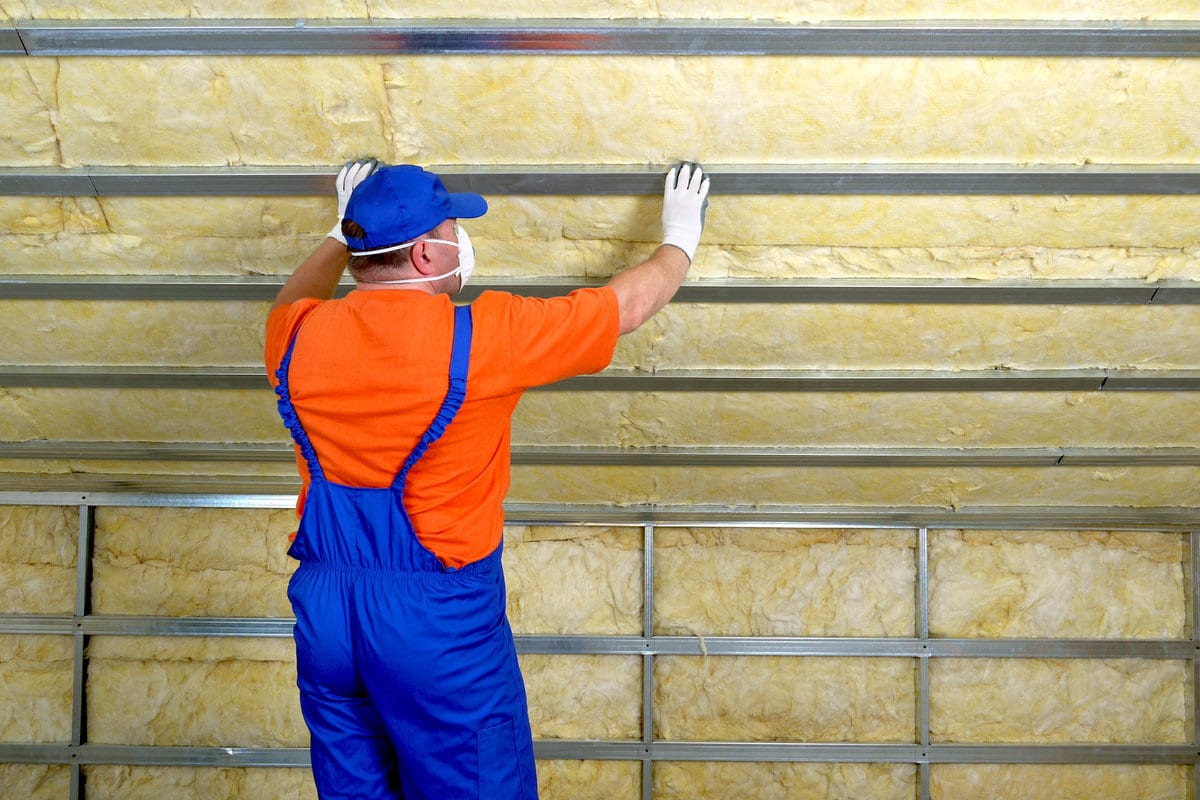Fibreglass insulation (glass wool)
Fibreglass insulation is one of the most frequently used insulation materials in the house. It is made of recycled glass fragments and pure sand. It is available in the shape of blankets or sheets. Thanks to the soft structure of glass fibre insulation, irregularities can easily be removed.
Applications
Glass wool is especially used as an indoor thermal and acoustic insulation material. They are most commonly applied underneath pitched roofs, wooden floors or on internal walls. Glass wool primarily appears inside the house as it quickly loses its insulation value when it comes into contact with damp.
Do you want to insulate your roof, floors or walls with fibreglass insulation? An experienced insulation expert will carry out this job flawlessly. On our quote page, you can request free and noncommittal quotes from different professionals. Click here to request quotes.

Advantages and disadvantages of glass wool
Disadvantages of fibreglass insulation
When processing and installing fibreglass insulation, mineral fibres are released. These may cause irritation and inflammations of the eyes, skin and airways. It is therefore advisable to wear a mask, dust goggles and gloves.
Advantages
- Easy to install, even for do-it-yourselfers
- Fireproof material
- Perfectly suited to seal uneven surfaces, thanks to its compressibility
- Quite cheap insulation
- Recyclable insulation that is recovered from residues
Choose the right material for every job
Fibreglass insulation is available in different variations, shapes and thicknesses. Always check which type you need in order to avoid unnecessary costs and bad insulation values. Below, you can find an overview of the different options:
Available thicknesses of fibreglass insulation
The thickness of glass wool insulation has a big impact on the acoustic and thermal insulation value. Thicknesses of fibreglass insulation start from 60mm and increase by 20 mm (80, 120, 140, 160, 180,…). A minimal thickness of 160mm is recommended in order to insulate a pitched roof. To make sure there are no seams, you may as well work with two alternating layers.
Available finishes and shapes of fibreglass wool
Glass wool is available in the shape of supple sheets, blankets or in bulk. Sometimes, a finish layer is already provided on the outside. This can make it easier to work (in the case of paper) or it can either be used as a vapour barrier (in the case of aluminium). One can use the overlapping finish to seal seams or to staple it onto wooden constructions.
Install glass wool insulation – always provide a vapour barrier!
To prevent the fibreglass insulation from absorbing damp from the rooms, you must always provide a vapour barrier on the inside of every room. Use, for example, insulation blankets with an aluminium coating and seal the seams with matching tape.
Insulation values and properties of blankets and fibreglass batts
- Resistant to moulds and vermin
- Heat storage capacity: 800 J/kgK
- Lambda value: 0.032 to 0.040 W/mL-K
- Fire class: A2, S1, d0 = self-extinguishing and low flammability
- Density: 25 kg/m³
- Diffusion resistance: 1
